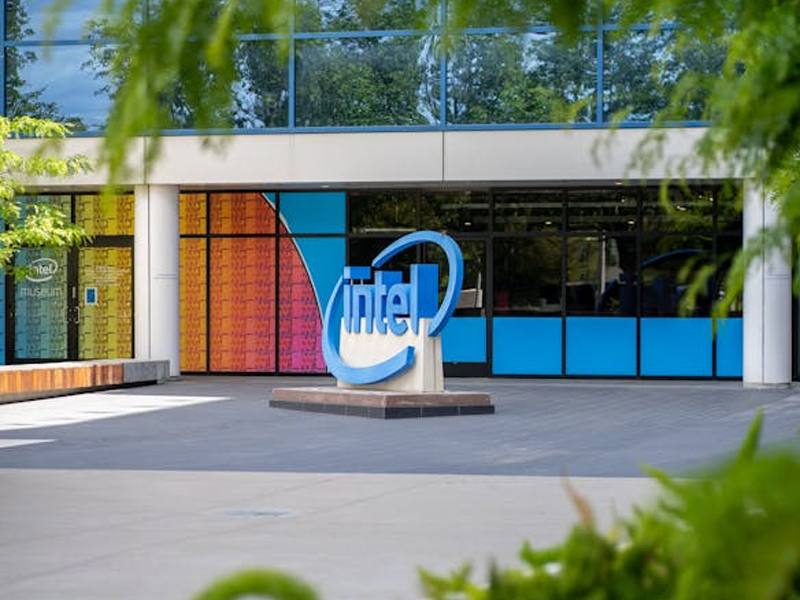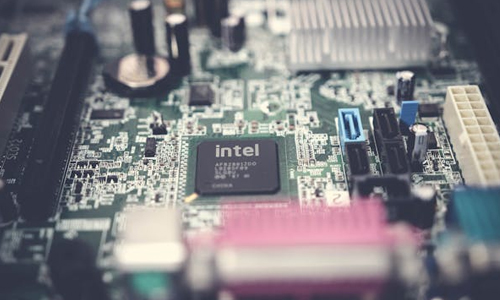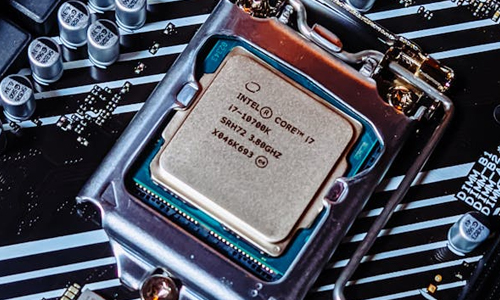Mixed Signals: Decoding Intel’s Stock Slump Despite Earnings Beat

Blockchain Technology
A Brighter Than Expected Top Line: Unpacking Q1 Performance
On the positive side, Intel reported better-than-anticipated earnings for the first quarter of 2024. Revenue growth was driven by strong demand in the company’s computing, data center, and artificial intelligence (AI) segments. This indicates continued market interest in Intel’s core processor technologies, particularly for personal computers and server applications that power the cloud. Furthermore, the company managed to navigate ongoing supply chain challenges to deliver these results, showcasing a degree of operational resilience.The Guidance Gloom: Why Investors Frowned
 However, the sunshine was quickly overshadowed by Intel’s forecast for the second quarter. The company’s revenue guidance fell short of analyst expectations, raising concerns about potential slowdowns in key markets. Several factors might be contributing to this cautious outlook:
However, the sunshine was quickly overshadowed by Intel’s forecast for the second quarter. The company’s revenue guidance fell short of analyst expectations, raising concerns about potential slowdowns in key markets. Several factors might be contributing to this cautious outlook:
The Lingering Chip Shortage
While some signs suggest the global chip shortage might be easing, it continues to impact production capacity and component availability. This could limit Intel’s ability to meet demand in the short term.Macroeconomic Concerns
Rising inflation and potential economic headwinds could dampen consumer spending on electronics, impacting the PC market – a crucial revenue stream for Intel.Competition Heats Up
Intel faces stiff competition from chipmakers like AMD and NVIDIA, particularly in the data center and AI segments. This competitive landscape could put pressure on both pricing and market share.What Does This Mean for Intel’s Future?
 The recent stock price decline doesn’t necessarily signal a long-term decline for Intel. The company boasts a strong track record of innovation and has weathered numerous market storms throughout its history. Here are some key factors to consider:
The recent stock price decline doesn’t necessarily signal a long-term decline for Intel. The company boasts a strong track record of innovation and has weathered numerous market storms throughout its history. Here are some key factors to consider:
Intel’s Foundry Ambitions
The company is making significant investments in its foundry business, aiming to become a major player in chip manufacturing. Success in this segment could be a game-changer, diversifying revenue streams and reducing reliance on third-party foundries.The Future of Computing
Emerging technologies like artificial intelligence and the continued growth of the cloud present significant opportunities for Intel. The company’s investments in AI research and data center solutions could position it well to capitalize on these trends.Investor Takeaway: A Time for Cautious Optimism
Intel’s recent earnings report presents a mixed picture. While the company delivered a solid Q1 performance, its cautious outlook for the coming quarter raises concerns. Investors should carefully consider both the short-term challenges and the long-term potential of the company before making investment decisions. For long-term investors, Intel’s commitment to innovation and its position in key growth markets might warrant a closer look.The Tech Landscape: A Sea of Change
The semiconductor industry is notoriously cyclical, and Intel is no stranger to these ups and downs. The company’s ability to navigate the current headwinds and capitalize on future opportunities will determine its future trajectory. One thing is certain: the tech landscape is constantly evolving, and Intel’s success will depend on its ability to adapt and innovate in a fiercely competitive environment.Keeping an Eye on the Future
Investors and tech enthusiasts alike will be closely monitoring Intel’s progress in several key areas:Execution of Foundry Strategy
Can Intel successfully ramp up its foundry business and compete with established players?Data Center and AI Innovation
Will Intel’s investments in these high-growth segments translate into market share gains?Navigating the Chip Shortage
How effectively can Intel manage supply chain disruptions and secure the components it needs to meet demand? The answers to these questions will play a significant role in shaping Intel’s future and the reaction of the investment community.A Final Word: Beyond the Headlines
Intel’s recent stock price dip serves as a reminder that the tech market is dynamic and subject to short-term fluctuations. However, it’s crucial to look beyond the headlines and analyze the company’s long-term prospects. Intel’s commitment to R&D, its established presence in core markets, and its ambitious foundry plans offer reasons for optimism. For investors with a long-term outlook, Intel’s recent struggles might present an attractive buying opportunity. However, conducting thorough research and understanding the inherent risks associated with any technology investment remains essential. The future of Intel, and the broader chip industry, remains to be written. One thing is certain: innovation, adaptation, and the ability to weather market storms will be key determinants of success in the years to come.Frequently Asked Questions?

01
AI & ML
Google Search Goes Visual: Search by Uploading a Video!
May 15, 2024

01
AI & ML
President to Announce $3.3 Billion Investment for AI Data Center by Microsoft
May 14, 2024

01
Tech news
iOS 18: A Sneak Peek at Apple’s Next Big Update
May 13, 2024

01
Cybersecurity
Did Dell’s Data Breach Expose Your Information? Here’s What to Do
May 11, 2024
SUSBSCRIBE TO OUR NEWSLETTER
Join our subscribers list to get the latest news and special offers.
Google Search Goes Visual: Search by Uploading a Video!
President to Announce $3.3 Billion Investment for AI Data Center by Microsoft
iOS 18: A Sneak Peek at Apple’s Next Big Update
Microsoft’s New Web-Based Mobile Gaming Store